The 20th-century design pioneer, whose sculptural style remains legendary today, is the subject of a new book that draws on family history as well as his works.
Celebrating the life and career of the designer who helped spearhead the British modern jewelry movement of the 1960s to 1970s, William Grant’s book Andrew Grima: The Father of Modern Jewellery (ACC Art Books) is the first major monograph on the master jeweler.
As the husband of Grima’s second wife, Jojo, and stepfather to their daughter, Francesca, he had access to family history as well as extensive archives. These included thousands of Grima’s rough sketches, fine-line pencil drawings, formal painted designs, plus photographs and records covering the span of Grima’s life in jewelry.
Grant undertook the book, he says, at his wife’s request, to coincide with her late husband’s 100th anniversary in 2021. The result is a detailed and lavishly illustrated portrait of Grima’s personal and professional life, showcasing the jeweler’s evolving collections, from the 1940s through to his death in 2007.
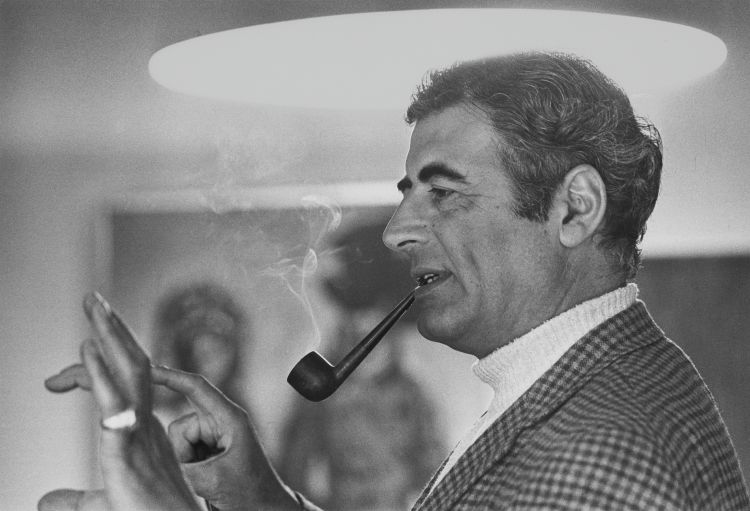
Garnering awards and accolades, Grima assumed almost a celebrity status, according to Grant, appearing on talk shows and in newsreels. His jewelry was used in both advertisements and fashion shoots, while his clients including the British royal family, celebrities and society VIPs.
Through words and pictures, Grant provides a detailed portrait of Grima’s pioneering design aesthetics, and points to the following elements that became synonymous with the jeweler’s name:
- His goal was to produce the highest level of craftsmanship, focusing on unique pieces “rather than designs for an assembly line.” He chose materials “based purely on form, color and texture, and aesthetic interest.”
- Grima’s one-off pieces were often “built around a single stone,” with the gemstone seeming to “grow out of the gold.”
- The jeweler “preferred to work in yellow gold, usually unpolished with some form of texture.” He experimented from the early 1960s with “soldering together layer upon layer” of textured gold wire “in waves to give depth and movement.”
- He chose “unconventional materials that pleased his eye regardless of sheer intrinsic value.”
- He used uncut stones — precious and semiprecious — as well as “small individual diamonds as irregularly placed points of light to accent the gold work.”
- Grima’s pieces were large-scale and daring, “uncompromisingly modernist, sculptural and abstract,” innovative and elegant, but “always wearable” rather than art for art’s sake.
- He had a lifelong “collaboration with nature,” drawing inspiration by observing the natural world in a more “transient state.” Examples included icicles melting on a roof, cloud formations, and waves lapping on a shoreline.
- The jeweler is quoted in the book as saying that “rather than a show of wealth that is hidden in a safe and dusted down for formal occasions,” jewelry should instead be worn as a “fashion accessory.”
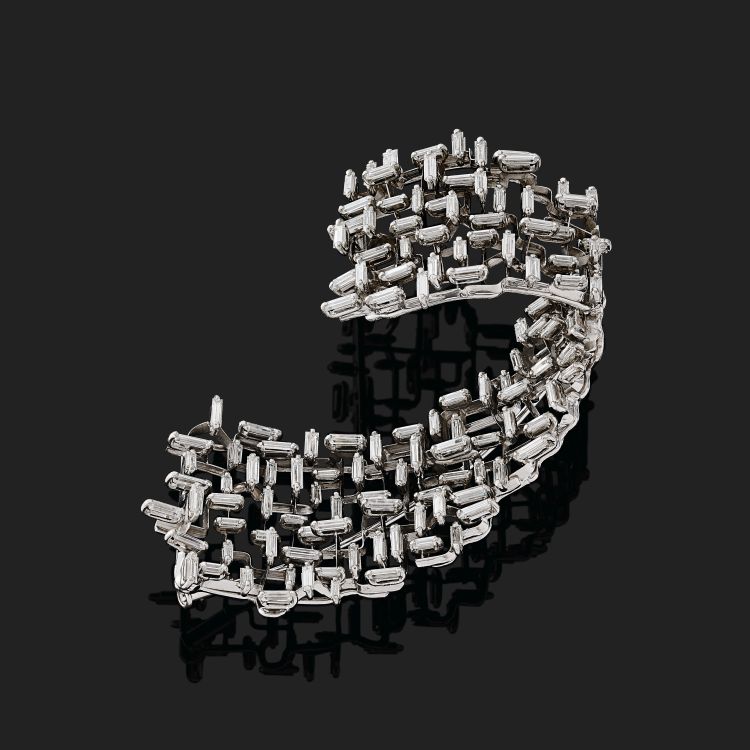
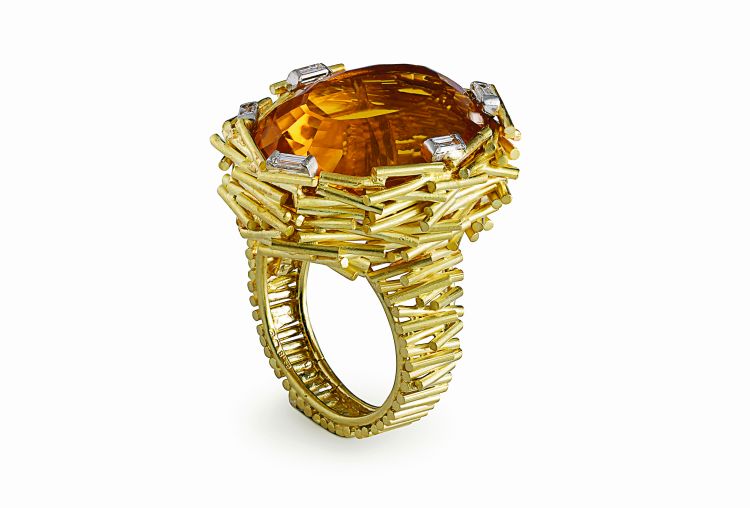
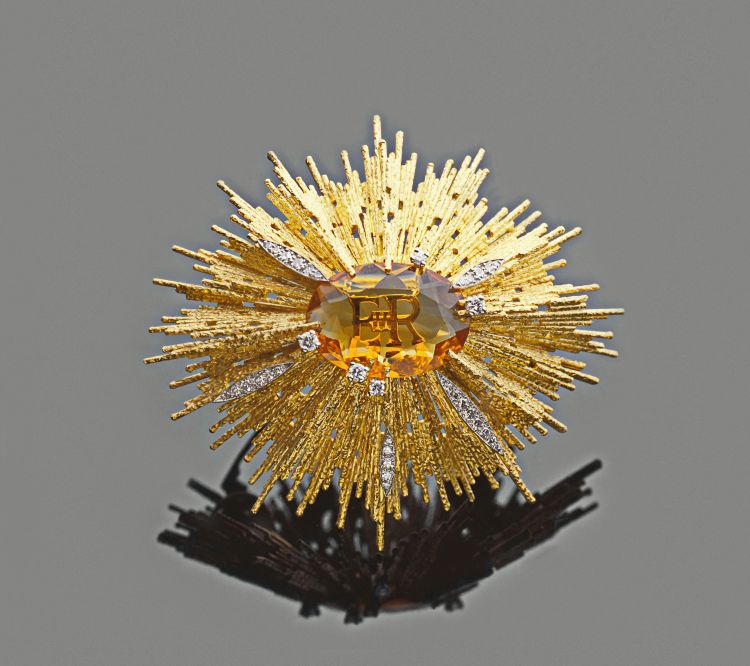
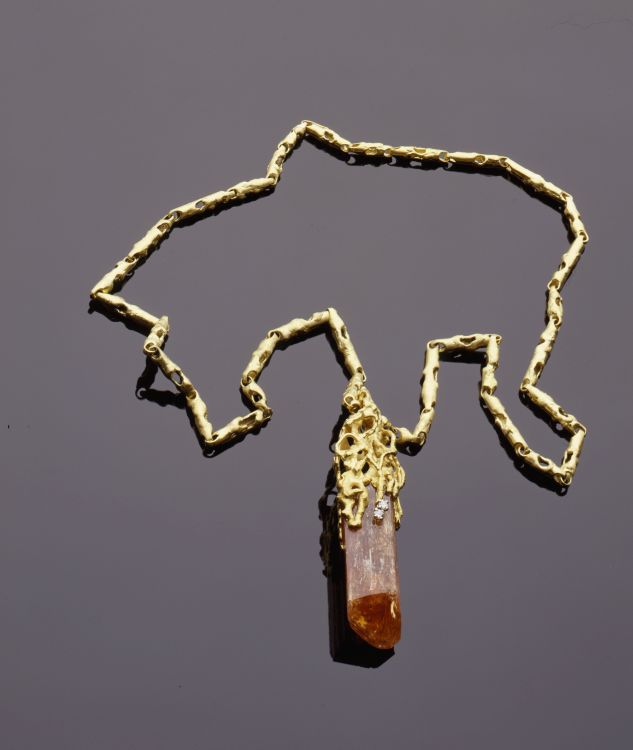
Main image: Andrew Grima brooch with yellow gold “matchsticks,” green tourmaline and diamonds. Photo: Grima Archives.


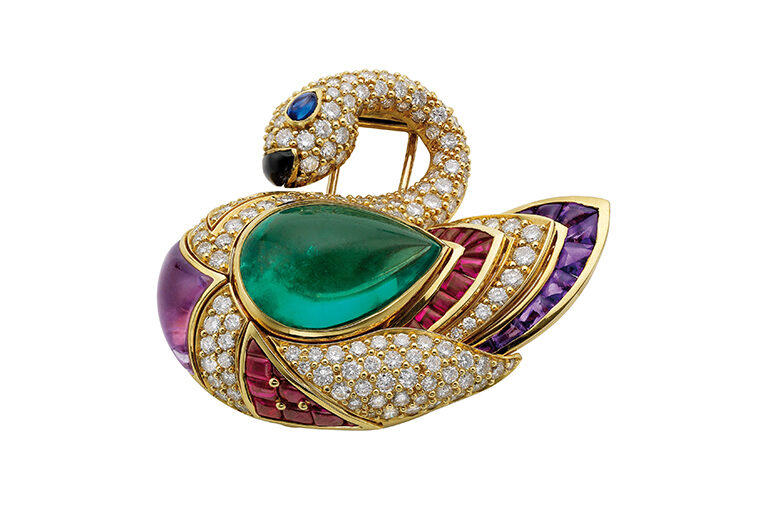
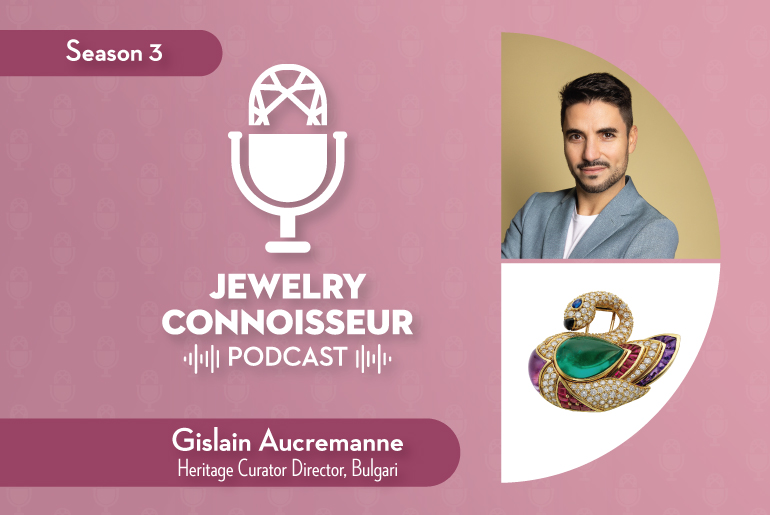
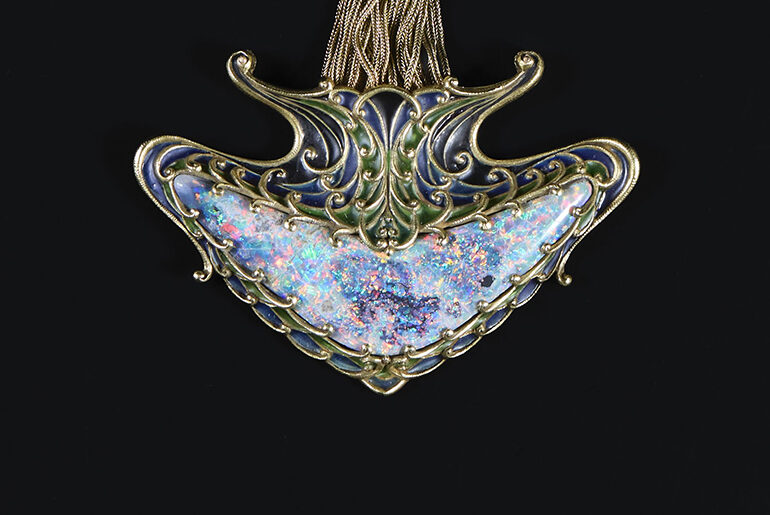
1 Comment
Pingback: Simply Brilliant: Artist-Jewelers of the 1960s and 1970s - Jewelry Connoisseur